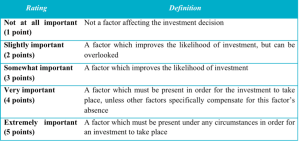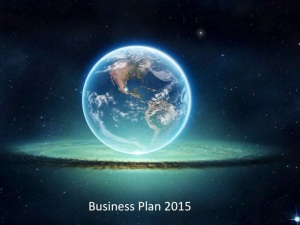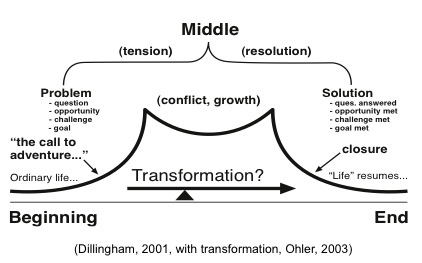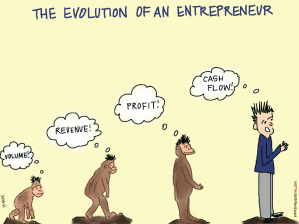 <\
<\
Leadership is an ability to motivate, influence and lead people in and outside an organization towards a common goal or purpose. It can be learnt or it’s inborn. As a quality, leadership is constantly evolving and for an entrepreneur different leadership characteristics must come to play at different stages of the business growth as presented in Figure 1. I thought I’d explain why these are important leadership skills as an individual you need to be aware and develop.
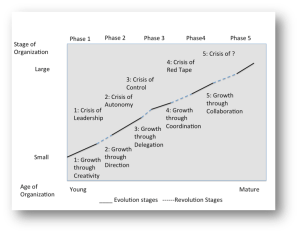
Exhibit 1: The Greiner Model of the five stages of growth[1]
The Skill of Creativity
You cannot start the entrepreneurial journey without the skill of creativity. Sure, maybe many other people have had an idea similar to yours but how you will make it work, convince others of its potential and get people to fall in love with the possibilities is a creative process. If you look at the evolution of the iPod, it was a creative destruction process where Apple brilliantly combined several industries (a music library, computer technology, design) together to reinvent the concept of listening to music.
Leadership at this stage needs you to communication creatively and create strategy. You will have to constantly make do with limited resources and still find ways to make things work (bootstrapping), you will need a minimum viable product, find ways to pivot, basically find ingenious ways to make your idea feasible. More importantly you will have to find your investors and engage them. If you are looking outside your circle of friends and family, you have to catch a potential investor’s eye and help them see an opportunity that only you can grab! Many investors don’t have more time than for a “5 second” pitch.
Gallop[2] in their publication, Entrepreneurial StrengthsFinder[3] came to the conclusion that great entrepreneurs are creative thinkers. They “see” things other normal people can’t. And thier vision also gives them the ability to persevere even when others don’t believe there is any purpose to the pursuit.
Interestingly there are differences between Asian leaders and their western counterparts. In a recent HBR Blog, Lagerberg (2014)[4] stated that out of 3400 business leaders surveyed in 45 countries, nine in ten ASEAN leaders believe creativity is important, compared with just 57% in the EU; while 85% of ASEAN leaders think intuition is important, compared to only 54% in the EU.
You cannot survive as an entrepreneur if you cannot be creative – whether it is fire-fighting, bootstrapping, pitching or just giving yourself and your stakeholder the inspiration to go on.
The Skill of Direction
Where are you going? Are you able to point the way? Where do you get your direction? Vichare[5] has a great list to help you find your sense of direction: gut instinct, data analysis, customer validation and mentorship. When you are in the first phase of growth, you are exploring options. While you may know what you want, you still have to be able to articulate your direction in measurable goals. One of the challenges of growth is that direction may get redefined as circumstances may change, more investors come on board, resources change and YOU change.
To have direction, we need a great sense of orientation –: where am I and in which direction am I heading? Bird’s study in 1988[6] found that the entrepreneur’s intension at the inception of an organization set the stage for organizational outcomes like survival, development and change! You need to be ruthless in weeding out multiple prospective businesses as there is just one you! Ask yourself, what makes the most financial sense? What will give you great returns and a long-term market advantage? Once you find yourself financially profitable you can explore more related opportunities. I am a firm believer in synergy. In our research, one of the VCs we approached said “What I have learned after reviewing 19000 startups, meeting over 4000 companies and over 100 investments there is no formula for investment at the seed stage because there are no numbers and tractions for us to look at but the team is everything. If you can measure what they are speaking about and express it in numbers then they are up to something”.
Direction is not just financial objectives, it means limiting your target market (not necessarily geographic markets) so you get maximum spillover, it means articulating this “vision” into a short one sentence with numerical objectives that can be measured and yet are inspiring and achievable. Your employees must know where you want to go. This is not easy. Many Founders (like many managers) don’t know where they are going and confuse employees as they only know what they don’t want. This will lead to low morale. Another VC in our research said, “They [plans] don’t work. A plan again is just guidance, I mean you have to look at your costs that you can’t change, which is your fixed cost. …as long as you can cover your fixed cost, everything else beyond that is your extra effort. Hence though it seems the “plan” itself is not important, the details that go into the plan and how they are communicated are very crucial.”
The Skill of Delegation
You are only one person and unfortunately you will become more inefficient as you handle more responsibilities. The key to building a great organization is delegation, delegation, and delegation! This means hiring or collaborating with the right team! A recent study we just concluded found that the team was an important factor in deciding investor funding.
To build a great team, here are some tips:
- Know your weaknesses and hire people for their competencies! You will be surprised inspired people will work for equity! Paul Brown[7], author of Sweat Equity, says “Overqualified people should be hired for each new position, as the company experiences rapid growth. The temptation is to hire cheap.” If you want to know how to balance diversity and similarity in an organization, Smith and Hou suggest redundant heterogeneity where core and second tier teams have same levels of heterogeneity[8].
- Make sure every employee believes in your vision (so you have to have one). Believing in a vision is not the same as hiring similar minded people. Research shows diversity is great for strategy so mix up genders, have different skills and backgrounds and have an organizational culture of respect! A study from University of Michigan and Cornell University found that gender diversity companies had 30% better results from IPOs[9]. Just diversity alone made organizations smarter according to Scientific American[10].
- Trust your employees but don’t be frighten to have formal performance appraisals. Make sure these are mutually agreed goal posts.
- Teams will change as you will require different competencies as the organization evolves. Don’t be afraid to take the tough decision!
- Delegation does not mean you have no responsibility – it is still your business and you are accountable to the various stakeholders you work with!
- Ensure you invest in good governance to track money and business relationships. It will save you a lot of headache later.
The Skill of Coordination
As you grow in size, you will find silos developing in your organization which leads to inefficiency, miscommunication and loss of trust. Booz, Allen and Hamilton[11] found that at a corporation level only 20-40% of R&D research results successfully ended up on a corporation’s product or service portfolio. Without a vision and strong long-term objectives, as an organization you will find your self disorganized, pursuing too many ideas and depleting resources. If you are a small company, you will find yourself burnt out.
To take better decisions between your diverse teams and key decision makers you need to coordinate[12] between various personalities, cultures, expertise, countries, across management levels and with the intent of facilitating common communication. It is not about putting together an agenda or a weekly scheduled meeting! When there are transformational changes in an organization, you need more than clear objectives and direction, you need a structure to help manage decision making. Too often paralysis sets in through too many meetings that have no outcome except frustration! Sound familiar? However face to face meeting give you access to intuitive information as a study by Forbes Insights[13] confirmed when their respondents said the second most important benefit (77%) of face-to-face meetings was the “ability to read body language and facial expressions”.
A McKinsey & Company Global Survey[14] found that during change, those leaders who created a sense of ownership for their frontline staff showed a 70% percent success rate for transformations. When they allowed their frontline employees to take initiative for change the success rate increased by 1% to 71% but when transformations were coordinated through top and from the bottom, the success rate increased to 79 percent. Gallup[15] found that over 87% of the global work felt that they were disengaged. In a survey of 20,000 employees from 500 organizations, peers, not money was the primary influence on employees and a great motivator according to the 2014 TINYpulse Employee Engagement and Organizational Culture Report[16]. You need to invest in the creation of a strong corporate culture which embeds your values and vision for the future.
The Skill of Collaboration
According to David Archer[17], one of the authors of ‘Collaborative Leadership – Building relationships, handling conflict and sharing control.’ collaborative leadership can be defined as “the type of leadership required to get results across internal or external organisational boundaries”. It is about developing working relationship through mediation, influencing, engaging others, agility, patience and empathy. Research by ESI International[18] states that 65.5% of teams feel if they worked more collaboratively they would be more successful.
Strategic Alliances help[19] manage scare resources, get quick access to knowledge, open markets, reduce risks, increase competitiveness and create opportunities a small firm may not be able to do on its own. However as a leader you must know the success rate of international strategic alliances is 30%-50%[20]. PwC[21] state the reasons for failure range from legal issues (14%); poor working relationships (40%) or flawed strategy and business plans (46%).
Robson and Bennett[22] found in their study on collaboration that SMEs could increase turnover through collaboration with or getting external advice on business strategy and staff recruitment from suppliers (at national and international level), customers, lawyers and business friends/relatives. An important part of collaboration is networking[23] whether it is informal or formal relationships. While this is a skill that is useful at all stages, the stronger your relationship, the more access you have to finding opportunities, securing resources and gaining legitimacy which lead to survival and performance. Many leaders forget due to time commitment to network. Face to Face meetings still were the best way to network according to Forbes Insight! Strategic alliances are increasing by 25% pa accounting for as much as 30% in terms of organizational revenue and value, but success rate hovers at 40% or less.[24].
If you as a Founder intend to lead your company into growth and maturity, you need to update your leadership skills. Surprisingly very few Founders were successful as CEOs once their companies went public.
Sources:
[1] Greiner, L.E. 1972, ‘Evolution and revolution as organizations grow’, Harvard Business Review, vol. 50, no. 4, pp. 37-46.
[2] Badal, S.B. (2014), “Great Entrepreneurs Are Creative Thinkers”, Business Journal, August, Available: http://www.gallup.com/businessjournal/174269/great-entrepreneurs-creative-thinkers.aspx
[3] Clifton, J and Badal, S. B. (2014), Entrepreneurial StengthsFinder, Gallup Press, New York
[4] Lagerberg, F (2014) HBR, dated 6 June, Available:https://hbr.org/2014/06/asian-leaders-value-creativity-and-intuition-more-than-europeans-do
[5] Vichare, S (2014), “Entrepreneurs Compass: Where do you get your Direction from?”, Inc 42, Available: http://inc42.com/entrepreneurship/entrepreneurs-compass-where-do-you-get-your-direction-from/
[6] Bird, B. (1988), “Implementing the Entrepreneurial ideas: The Case for Intension”, The Academy of Management Review, Vol. 13, No. 3, pp. 442-453
[7] Brown, P. B., (2013),“Entrepreneurs: Delegate Before You Have To, Say Your Most Successful Peers”, Forbes, Available: http://www.forbes.com/sites/actiontrumpseverything/2013/07/06/entrepreneurs-delegate-before-you-have-to-say-your-most-successful-peers/
[8] Smith, E. and Hou, Y. (2015 ), “See How the Right Diversity of Skills Can Help Your Team”, Available: http://insight.kellogg.northwestern.edu/article/how-diverse-should-your-team-be/
[9] Markowitz, M (2011 ), The Case Against the All-Male Startups, Inc, Available: http://www.inc.com/articles/201109/how-to-combat-the-all-male-startup.html
[10] Phillips, K (2014), “How Diversity Makes Us Smarter”, Available: http://www.scientificamerican.com/article/how-diversity-makes-us-smarter/?&WT.mc_id=SA_MB_20140917
[11] Booz, Allen & Hamilton, Corporate Incubators: Exploiting a Company’s Intellectual Assets, Insights, Vol. 6, No. 3, Available: http://www.boozallen.com/media/file/61725.pdf
[12] THE STRATEGIST’S CHANGE (2014), Think Act, Roland Berger, Available: https://www.rolandberger.com/media/pdf/Roland_Berger_TAB_The_Strategists_Change_20141110.pdf
[13] Forbes Insights. (2009), “Business meetings: The case for face-to-face, 2-3”, Available: http://images.forbes.com/forbesinsights/StudyPDFs/Business_Meetings_FaceToFace.pdf
[14] McKinsey & Company (2010), “What successful transformations share: McKinsey Global Survey results, Insights & Publication”, Available: http://www.mckinsey.com/insights/organization/what_successful_transformations_share_mckinsey_global_survey_results
[15] http://www.gallup.com/poll/165269/worldwide-employees-engaged-work.aspx
[16] “The 2014 TINYpulse Employee Engagement and Organizational Culture Report”, Available: http://www.tinyhr.com/2014-employee-engagement-organizational-culture-report
[17] Archer, D. (2013), “What makes a collaborative leader?”, HR Zone, Available: http://www.hrzone.com/talent/development/what-makes-a-collaborative-leader
[18] ESI International (2011), Available: http://www.slideshare.net/FRANKKREZE/research-report-team-collaboration-study1
[19] Aldakhil, A.M. and Nataraja, S. (2014), “Environmental Factors and Measures that Affect the Success of International Strategic Alliances”, Journal of Marketing and Management, Vol. 5, No. 1, pp. 17- 37, Available: http://www.gsmi-ijgb.com/Documents/JMM%20V5%20N1%20P02%20Abdullah%20Aldakhil%20-%20International%20Strategic%20Alliances.pdf
[20] Kalmbach, C. Jr., & Roussel, R. (1999). Dispelling the myths of alliances. Retrieved from http://www.2c.com.html on 24/09/2013; Kang, N. & Sakai, K. (2000). International strategic alliances: their role in industrial globalization. STI Working Paper Series, 1(5), 2-48.
[21] PwC (2014), Available: http://www.pwc.com.au/consulting/assets/publications/Science-of-Alliances-2014.pdf
[22] Robson, P.J.A. and Bennett, R.J. (2000 ), Business Advice and External Collaboration, Small Business Economics, Vol. 15, No. 3, pp. 193-208.
[23] Elfring, T. and Hulsink, W. (2003), “Networks in Entrepreneurship: The Case of High-technology Firms”, Small Business Economics, Vol. 21: 409–422,
[24] Hughes, J and Weiss, J (2007), Simple Rules for Making Alliances Work, Harvard Business Review, Available: https://hbr.org/2007/11/simple-rules-for-making-alliances-work


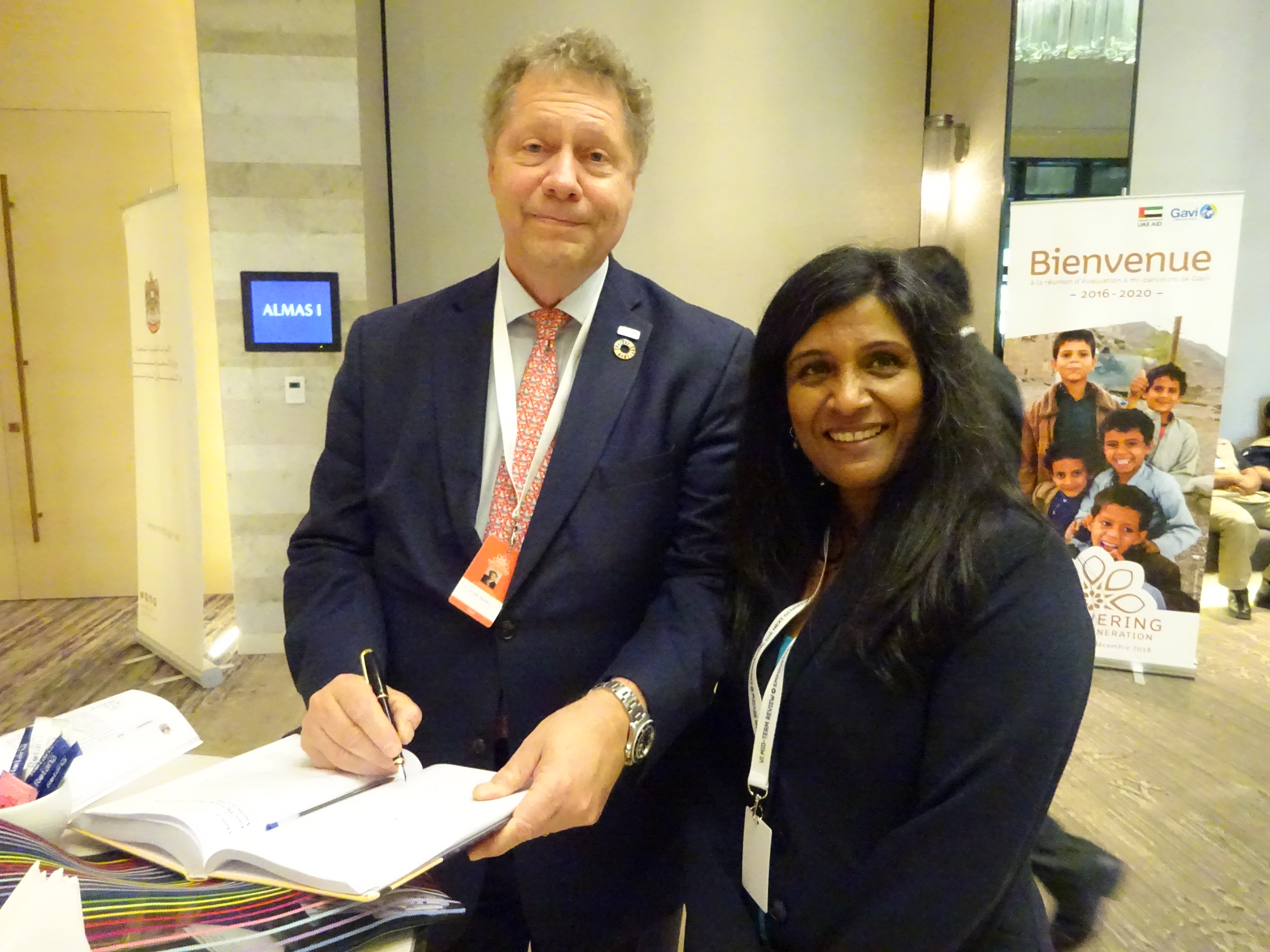 It has been an honor to represent the Mohammed Bin Rashid School of Government at the Gavi, the Vaccine Alliance’s Mid-term Review, which was hosted by the UAE Government in Abu Dhabi. H.E. Reem Al Hashimy, Minister of State for International Cooperation, United Arab Emirates, highlighted the similarities in vision between the UAE and Gavi. She said, “The late Sheikh Zayed bin Sultan Al Nahyan demonstrated that investing in people’s welfare, human development produces great dividends for individuals, families and society as a whole. This echoes Gavi’s own commitment to improving the lives of children in the world’s poorest countries.”
It has been an honor to represent the Mohammed Bin Rashid School of Government at the Gavi, the Vaccine Alliance’s Mid-term Review, which was hosted by the UAE Government in Abu Dhabi. H.E. Reem Al Hashimy, Minister of State for International Cooperation, United Arab Emirates, highlighted the similarities in vision between the UAE and Gavi. She said, “The late Sheikh Zayed bin Sultan Al Nahyan demonstrated that investing in people’s welfare, human development produces great dividends for individuals, families and society as a whole. This echoes Gavi’s own commitment to improving the lives of children in the world’s poorest countries.”

 <
<
